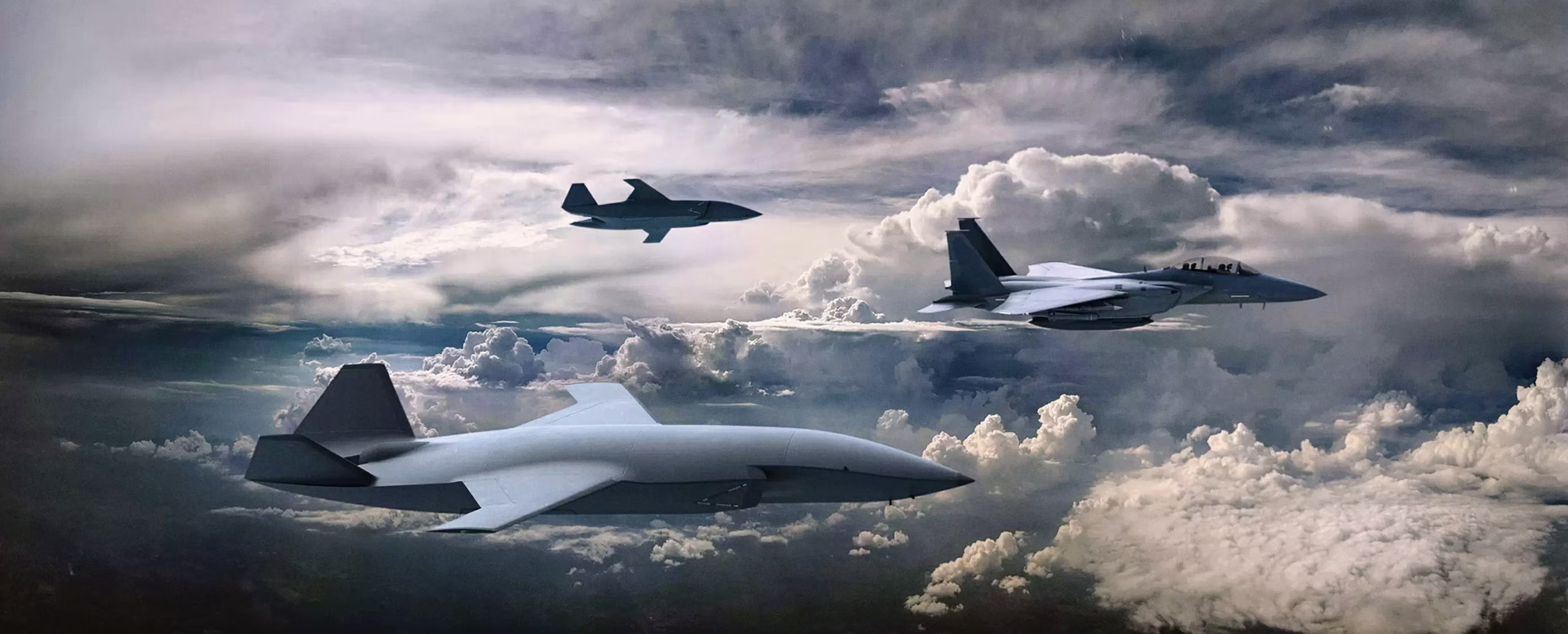WASHINGTON — The Air Force is studying whether drone wingmen flying alongside piloted fighter aircraft could be controlled by operators in nearby battle management aircraft or refueling tankers, according to Chief of Staff Gen. CQ Brown.
The future fleet of collaborative combat aircraft, or CCA, as the service calls the concept, could involve them being partially guided from nearby aircraft such as the KC-46 Pegasus or E-7 Wedgetail, Brown said in a discussion at the Brookings Institution on Monday.
The Air Force wants these autonomous CCAs to accompany its future Next Generation Air Dominance fighter, and perhaps also the F-35. Their missions could include striking targets, conducting intelligence, surveillance and reconnaissance missions, or electronic warfare operations such as jamming enemy signals, said Brown.
There are a lot of finer points that have to be worked out relating to the way CCAs are guided, he said, whether from the cockpit of the fighters they are accompanying or from other aircraft in the area.
“How does it team with a crewed aircraft?” Brown said. “And could you operate it from the back of a KC-46? We’ll have E-7s eventually, could you operate it from the back of an E-7? Could you operate it from a fighter cockpit? We’re thinking through those aspects.”
His comments echoed suggestions made by the Mitchell Institute for Aerospace Studies in an October 2022 paper on drone wingmen. The Mitchell Institute urged the Air Force to focus as soon as possible on refining how humans will interact with these drone aircraft, and one model floated by Mitchell envisioned a swarm of drones being directed by an air battle manager operating from a nearby Wedgetail.
Brown said that as the Air Force lays out future budgets for CCAs, it’s also considering what the aircraft itself — and the autonomous capability that will allow them to fly primarily on their own — will look like.
And the Air Force is also figuring out how it will build the organizations that are needed to operate and maintain these aircraft, and how it will train and equip the airmen who will operate and rely on them, he said.
Keeping costs down will be crucial if this concept will work, Brown said. One of the intended benefits of CCAs is they would be less expensive than traditional aircraft, and would not require an aircrew, he said.
“We’re really headed down that path,” Brown said. “I think you’ll see, as we start looking at our future budgets and the analysis we’re doing … we are committed to more uncrewed capability.”
Brown said the Air Force envisions a CCA fleet that would include a variety of drones, covering a wide range of sizes, capabilities, and different levels of how expendable they might be.
Air Force Sec. Frank Kendall has said CCA aircraft must be at least “attritable,” a term the service uses to mean they could be reused, but inexpensive enough that they could be lost in combat. And some CCAs could even be completely expendable, designed to be cheap enough that they could go on risky missions with the expectation they would be destroyed in the process.
Kendall also said in September 2022 that a competition for CCAs would likely be held in 2024, although he cautioned details would not be included in the fiscal 2024 budget proposal that is soon to be released.
The Air Force will have to be selective and “pragmatic” about what it puts on these drones, Brown said.
“If you look at cost, at what point do you say, ‘This is no longer attritable,’ because you’re putting so much capability into it, you’re spending so much money?’” Brown said. “You don’t try to put everything on a collaborative combat aircraft. [If the Air Force did] then now it becomes almost as expensive as a crewed aircraft. So there’s a bit of balance about how we go through that.”
Stephen Losey is the air warfare reporter for Defense News. He previously covered leadership and personnel issues at Air Force Times, and the Pentagon, special operations and air warfare at Military.com. He has traveled to the Middle East to cover U.S. Air Force operations.







